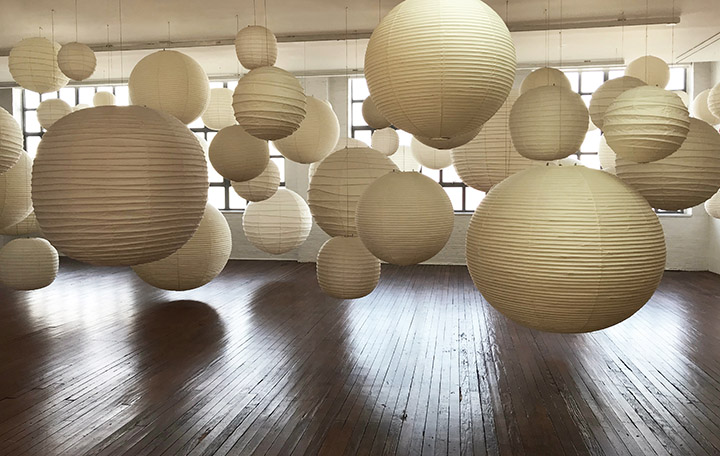

In 1951 Isamu Noguchi visited the town of Gifu, Japan, known for its manufacture of lanterns and umbrellas from mulberry bark paper and bamboo. Noguchi designed the first of his lamps that would be produced by the traditional Gifu methods of construction. He called these works Akari, a term meaning light as illumination, but also implying the idea of weightlessness.
The fabrication of Akari in Japan at Ozeki & Co. since 1951 followed the traditional methods for Japanese Gifu lanterns. Each Akari was handcrafted beginning with the making of washi paper from the inner bark of the mulberry tree. Bamboo ribbing was stretched across sculptural molded wood forms. The washi paper was cut into strips and glued onto both sides of the framework. Once the glue had dried and the shape had set, the internal wooden form was disassembled and removed. The outcome was a resilient paper form, which could be collapsed for packing.
With the warm glow of light cast through handmade paper on a bamboo frame, Isamu Noguchi utilized traditional Japanese materials to bring modern design to the home. Like the beauty of falling leaves and the cherry blossom, Noguchi wrote, Akari are “poetic, ephemeral, and tentative.” And he was fond of saying, “All that you require to start a home are a room, a tatami, and Akari.”
Images by the Noguchi Museum New York
We have multiple Isamu Noguchi items for sale here at S T U D I O | C A D M I U M

